site search
online catalog
MINT CONFEDERATE P1856 ENFIELD SHORT RIFLE SABER BAYONET WITH CS INVENTORY NUMBER: LOW NUMBER AND THE BEST ONE OUT THERE!

Hover to zoom

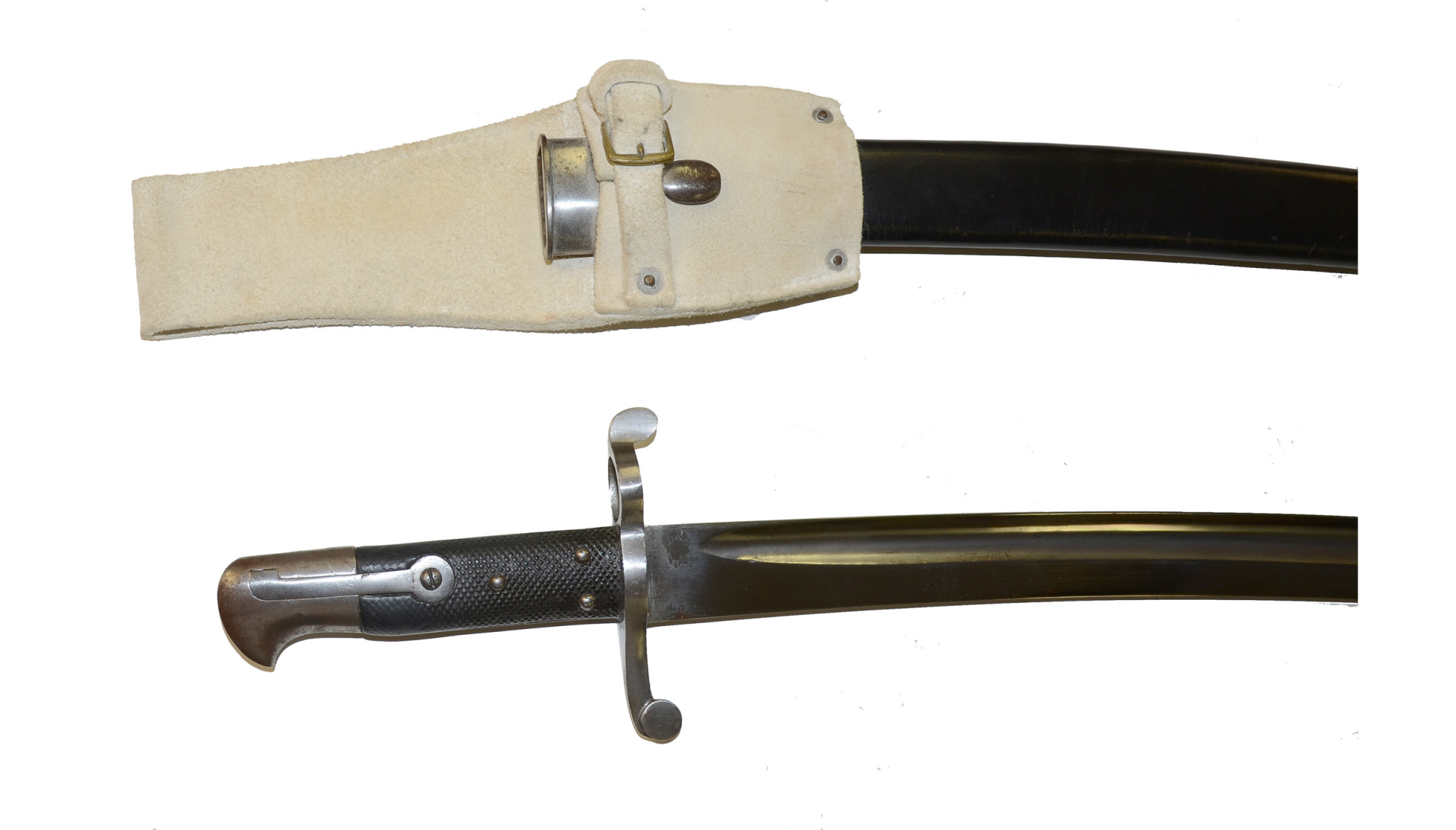
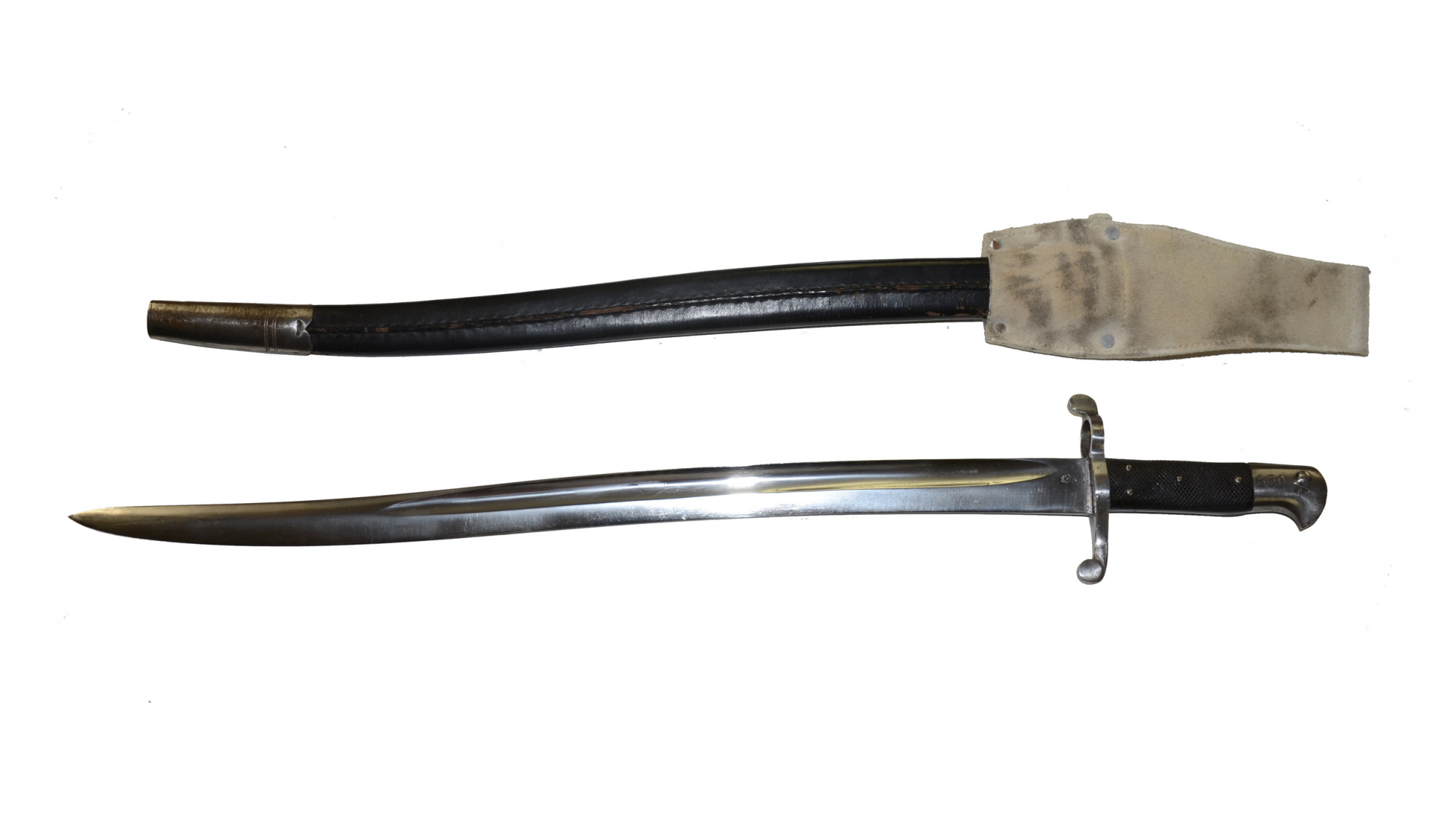
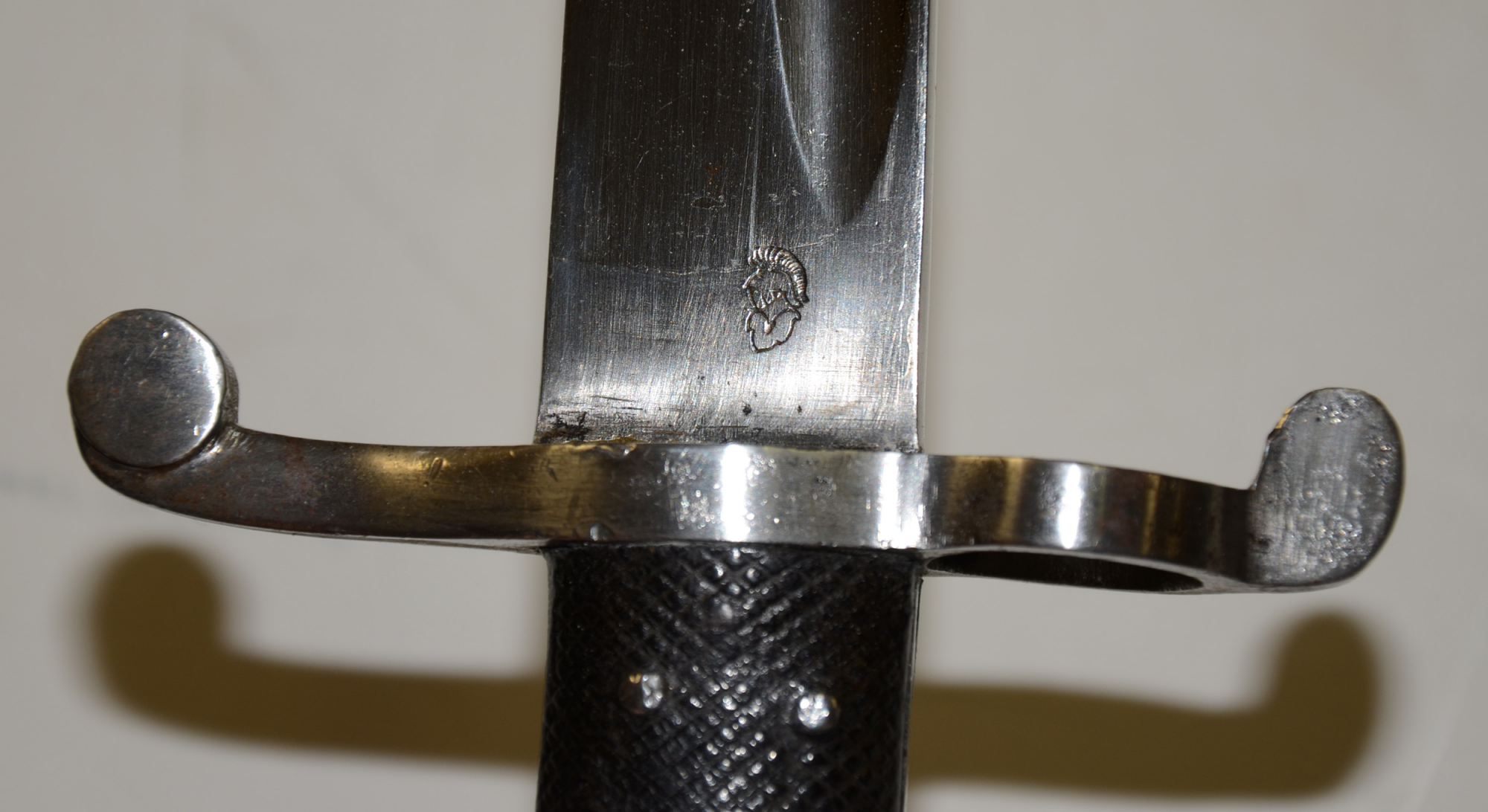
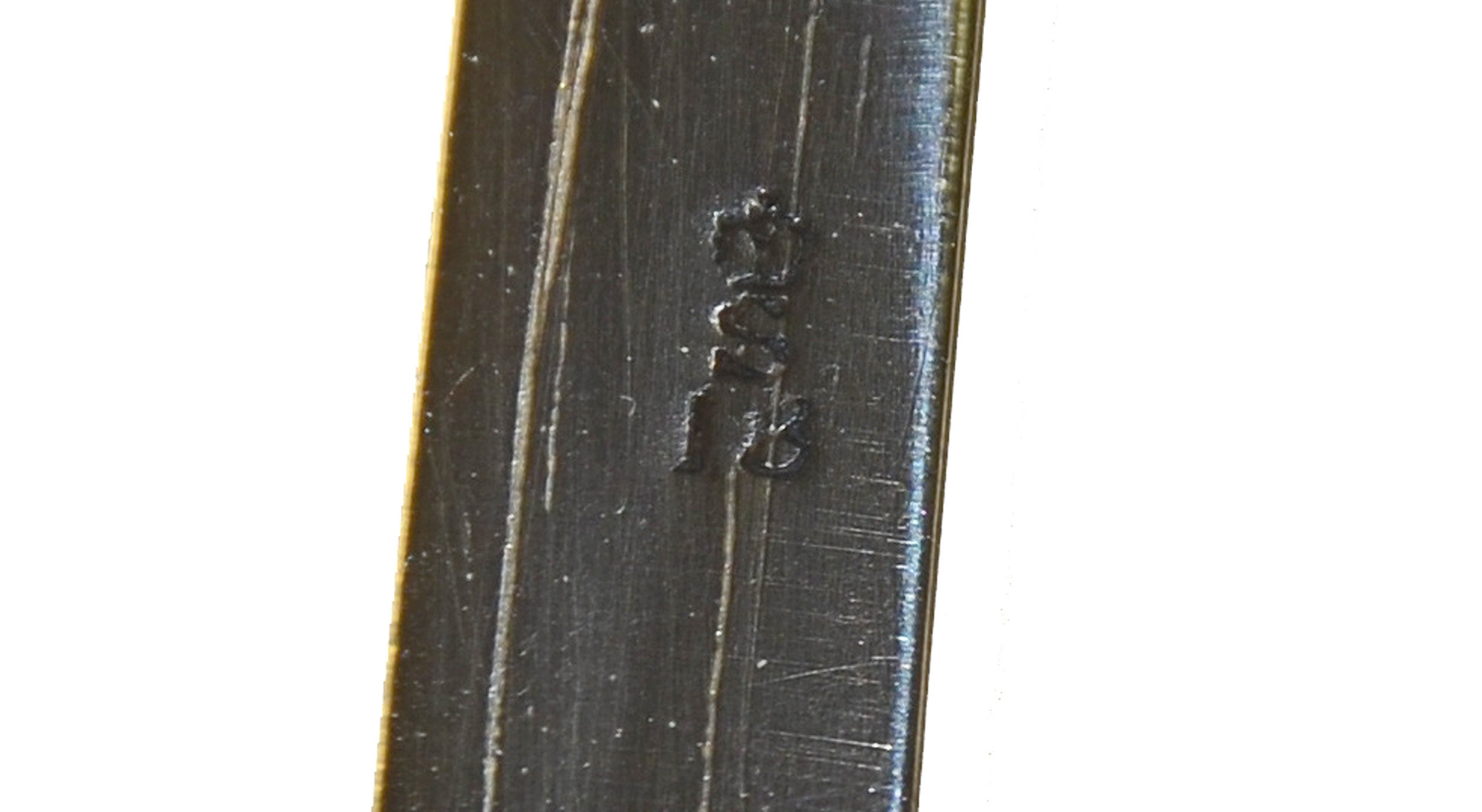

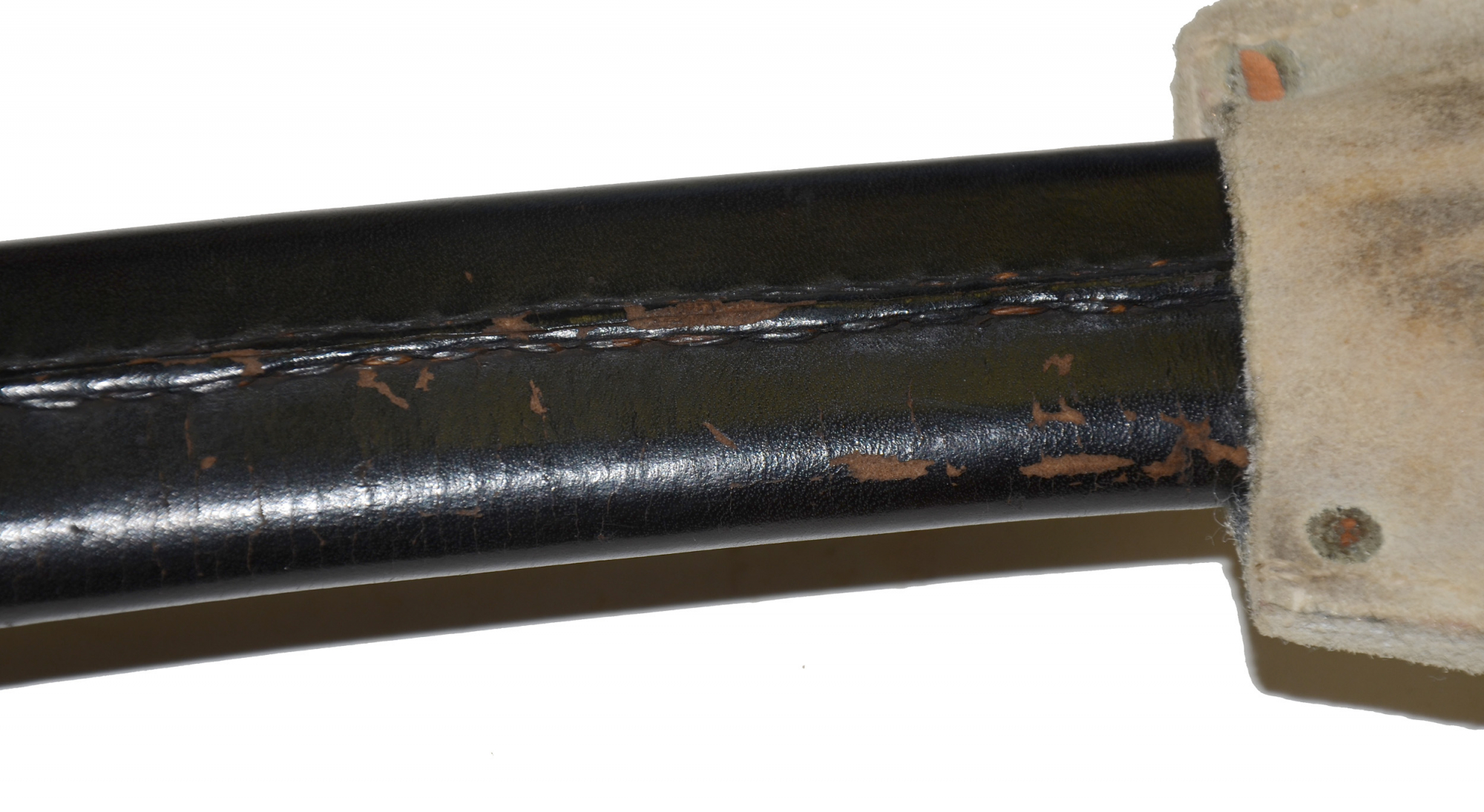
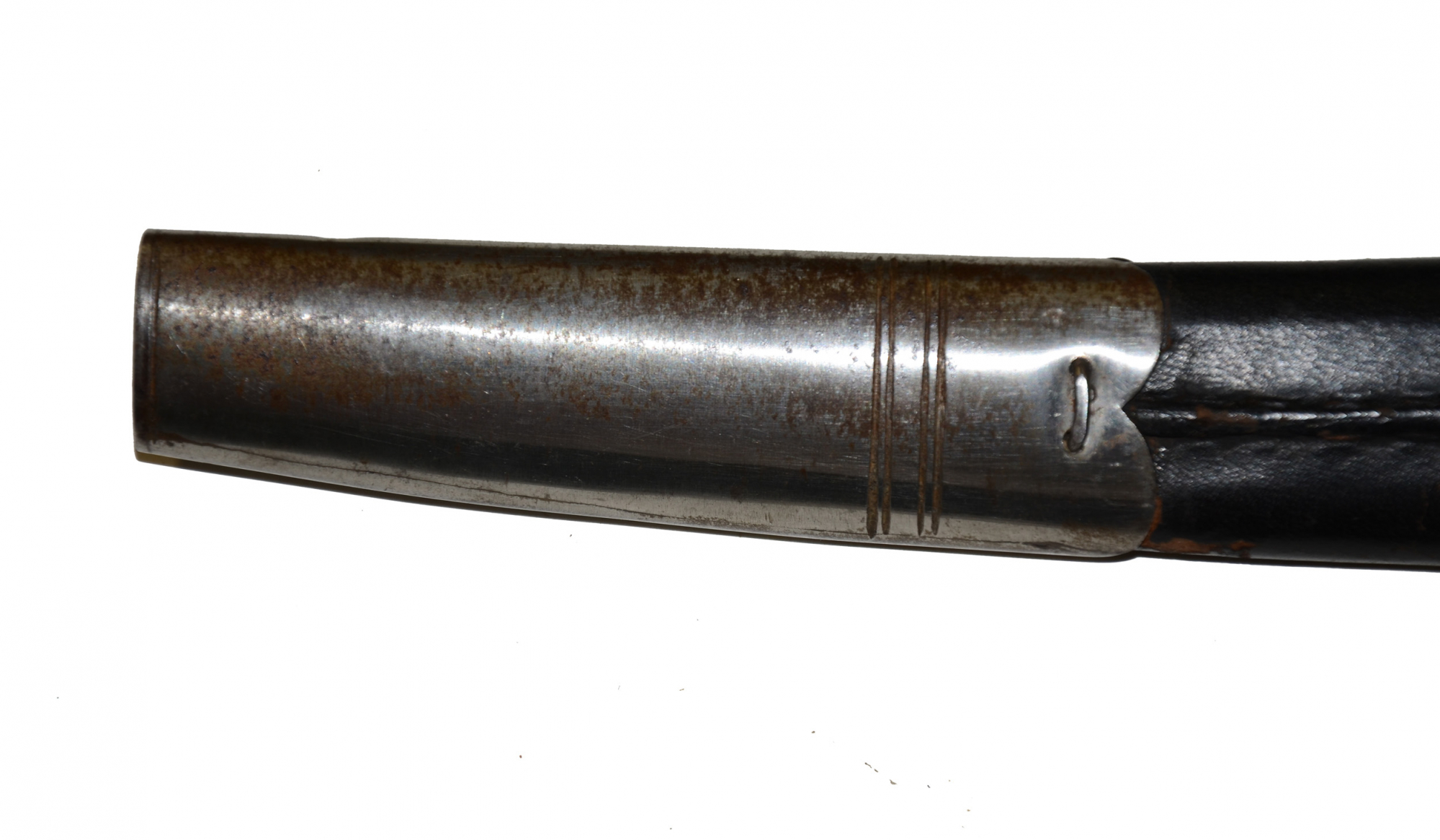
$2,500.00 SOLD
Quantity Available: None
Item Code: 893-02
If you have only one example of a Confederate imported and numbered Enfield Rifle saber bayonet, this would be the one to have. We have not seen a nicer example of this scarce bayonet. The English Connection (2014) noted fewer than twenty-five of these Confederate-marked bayonets had been recorded - the number has increased since then, but only slightly- just sixty in all by some recent accounts. This one is superb. All metal is smooth. The blade and steel mounts are bright. The blade edge and point are excellent. The pressed black leather grip slabs have good color, surface showing little wear to the raised dots or nodes meant to insure a better grip, and no distortion from age or dryness. We see just a tiny age-shrinkage gap between the end of slab and the pommel on the reverse, with a few of the tiny nodes forward of that showing some rubbing, as they do on the obverse just below the pommel, along the edges of the locking catch spring. Both of those spots are natural points of contact for the palm of the hand and little finger in grasping the bayonet and we note softening to the blue of the catch spring as well in the nearby area around the screw.
The blade is clearly marked on the obverse ricasso with the knight’s head trademark of C.R. Kirschbaum of Solingen, whose company was founded in 1854, whose registered trademark is shown on P1859 cutlass bayonet in The English Connection (p.325) and specifically noted as appearing also on some Confederate imported Pattern 1856 sword/saber bayonets like this (p.327.) As is correct, there is no British inspection/acceptance stamp on the other side of the blade because this was a commercial product, one of many made for British volunteer companies, i.e. militia and the like, and for the general trade, and was not government property. The pommel bears a small, stamped “23” next to the spring release button that is likely a maker’s sub-inspection mark or mating number for its rifle. Next to this, somewhat crudely engraved is the Confederate viewer’s inventory number, “650,” which he would have applied to the rifles buttplate tang if brass mounted, or stamped in the wood if iron mounted, and is occasionally seen on ramrods as well. The English Connection notes two different engraving styles. This seems to most closely match that in the upper photo of the two on p.329, given the similarity of the “6,” in another low-numbered example, number “562.”
In form this is the bayonet for the Pattern 1856 Short Rifle, identifiable by the extended groove for the bayonet stud reaching beyond the mortise in the pommel. For this distinctive element see Noe and Serbaroli, European Bayonets of the American Civil War, p. 63, and The English Connection, 324ff., but particularly p.328, illustrating the difference in the three principal types of P1856 Short Rifle bayonets showing Confederate markings, identifying this pattern as for a P1856 Short Rifle with an extended key to the bayonet lug.
This bayonet was certainly imported by the Confederacy between 1861 and 1862 as part of an early-war contract from the Confederate central government for some 10,000 short Enfield rifles. These were undifferentiated by specific type in the records, but the Pattern 1856 Short Rifle seems to have been the most common of seven types then in production or available. These were inspected by Confederate “viewer” John Southgate and stamped with his “JS / [anchor]” mark and engraved with the inventory numbers as an accounting method in the shipment. Marking all these weapons, and Enfields of other types, was labor intensive and time-consuming created a bottleneck in shipping and the practice seems to have been abandoned in the second quarter of 1862, providing an upper date of shipment for this bayonet, though its number would hint at something earlier. In addition, though short rifles may have been brought in by other parties, records indicate the Confederate government had purchased just 9,715 short rifles by February 1863 and their preference seems to have been for rifle muskets, and a few cavalry arms, thereafter.
The black leather scabbard and white buff bayonet belt frog with the bayonet match it for condition. The scabbard mounts are bright and tight. The scabbard has strong color, very good surface with only minor crazing and few small rubs or flakes of the finish, and a tight seam. The buff frog is clean, with locking strap, buckle and rivets in place and secure. The frog stud on the bayonet scabbard is not numbered, which is seen on at least one extant scabbard, though it is not clear all were so marked to match the bayonet and rifle. We do note, however, that it bears a British government inspection mark, making it likely it came off another sword bayonet at some point.
This is a scarce saber bayonet, with dead-real Confederate import markings. You will have to hunt long and hard to find another and are unlikely to find one better. [sr][ph:L]
~~~~~~~~~~~~~~~~~~~~~~~~~~~~~~~~~~~
THIS ITEM, AS WITH ALL OTHER ITEMS AVAILABLE ON OUR WEB SITE,
MAY BE PURCHASED THROUGH OUR LAYAWAY PROGRAM.
CLICK HERE FOR OUR POLICIES AND TERMS.
THANK YOU!
Inquire About MINT CONFEDERATE P1856 ENFIELD SHORT RIFLE SABER BAYONET WITH CS INVENTORY NUMBER: LOW NUMBER AND THE BEST ONE OUT THERE!
Most Popular
Historical Firearms Stolen From The National Civil War Museum In Harrisburg, Pa »
Theft From Gravesite Of Gen. John Reynolds »
Selection Of Unframed Prints By Don Troiani »
Fine Condition Brass Infantry Bugle Insignia »
Large English Bowie Knife With Sheath 1870’S – 1880’S »
Imported (Clauberg) Us Model 1860 Light Cavalry Officer's Saber »
featured item
CONFEDERATE FIRST NATIONAL FLAG FROM ISLAND NUMBER TEN
This Confederate First National flag has a tight provenance going back to 1935, and before that an oral history as a war souvenir brought back from Island Number Ten by James William McLaughlin, a prominent Cincinnati architect who in 1861 had served… (1179-004). Learn More »


